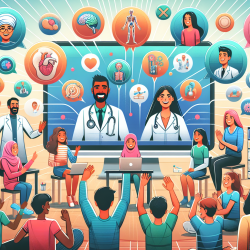Introduction
As practitioners dedicated to improving children's health outcomes, understanding the environmental factors that influence health is crucial. Recent research titled Police-Recorded Crime and Disparities in Obesity and Blood Pressure Status in Chicago offers valuable insights into how crime rates can impact health, particularly obesity and blood pressure. This blog post will explore how these findings can inform your practice and encourage further research.
The Study: Key Findings
The study analyzed data from 14,799 patients in Chicago, linking health data with police-recorded crime statistics. It found that individuals living in areas with high rates of violent crime had significantly higher odds of obesity and elevated blood pressure compared to those in low-crime areas. Specifically, those in the highest quartile for violent crime had a 53% higher chance of obesity and a 25% higher chance of elevated blood pressure.
Interestingly, while violent crime had a consistent association with negative health outcomes, exposure to homicide alone was not linked to obesity and had inconsistent associations with blood pressure. This suggests that recurrent exposure to everyday violent crime may have more profound health impacts than isolated severe events.
Implications for Practitioners
These findings highlight the importance of considering environmental factors, such as neighborhood crime rates, in health assessments and interventions. Here are some ways practitioners can use this information:
- Holistic Assessments: Incorporate questions about neighborhood safety into health assessments to better understand potential stressors affecting a child's health.
- Collaborative Efforts: Work with community organizations and local authorities to address safety concerns and create safer environments for children.
- Advocacy: Advocate for policies that reduce crime and improve neighborhood conditions, recognizing their impact on health.
Encouraging Further Research
While this study provides valuable insights, it also opens the door for further research, particularly in pediatric populations. Future studies could explore:
- The impact of crime on children's mental health and its subsequent effect on physical health.
- Longitudinal studies to assess the long-term health impacts of living in high-crime areas.
- Interventions that mitigate the health effects of crime exposure in children.
Conclusion
Understanding the link between crime and health is essential for practitioners aiming to improve children's health outcomes. By integrating these findings into practice and advocating for safer environments, we can make strides toward healthier communities. For those interested in delving deeper into the research, I encourage you to read the original study: Police-Recorded Crime and Disparities in Obesity and Blood Pressure Status in Chicago.










